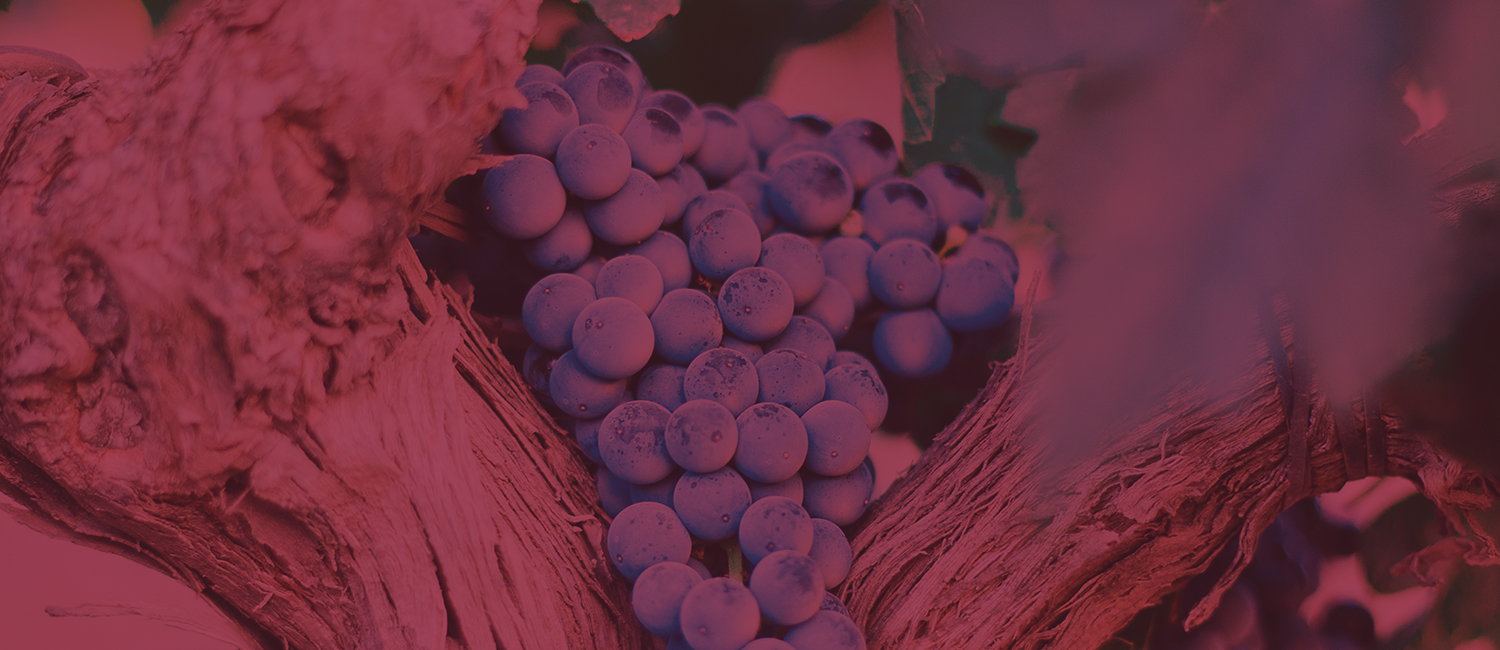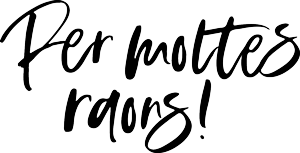
Culture
26 de June de 2023• • indigenasdigitales
CELEBRATIONS
Join the party
There’s always a reason to celebrate in Santa Maria, whatever the tradition and time of year. In January, you can dance with devils spitting fire during Sant Antoni; dress up and parade around town along with ornate floats in February; see solemn Holy Week processions in April; watch a gathering of gegants (giants) featuring imaginary characters in May; enjoy a line-up of exciting activities during the patron saint festivities in July; raise a glass in November with the Festa del Vi Novell, the festival that celebrates the new wine of the year; or get into the holiday spirit with Christmas in December and the Reyes Magos (Three Kings) parade during the first month of the year. Each celebration is paired with delicious products as part of an authentic, rich cuisine that is yours to enjoy. We look forward to seeing you!
Sant Antoni (16 and 17 January)
On Sant Antoni, the main attractions are fire and the demonis, people dressed up as demons and devils. The festival offers a line-up of activities that includes demoni mask and ximbomba (friction drum) workshops, guided tours and exhibitions.
Sa Revetla de Sant Antoni (the eve of the Feast of Saint Anthony) is celebrated on 16 January, where the Quintos (a group of the town’s 18-year-olds) accompany the Dimoni Feliu and the Tentaciones (a retinue of people that represent the temptations of Saint Anthony) to look for Sant Antoni. Joined by other demonis and music, they parade to the Plaça de la Vila, where the group of child demonis perform the first correfoc (literally “fire runs”, these are traditional parades that feature demonis lighting off fireworks) and light the bonfire, or fogueró, in the square, which will be used to light the other bonfires across the town. The main event, the Dimonis de Factoria de So, is a correfoc that starts later and features demonis from other towns as well as musical performances.
A torrada (toast) topped with traditional Majorcan sausage is typically eaten for dinner on this night, served up in the Plaça de la Vila, at different dinners put on by local associations and by the residents themselves. The evening’s festivities also include gloses (both traditional and improvised) sung to the beat of ximbombas (friction drums), xeremies (native bagpipes) and other drums.
The Sant Antoni beneïdes (blessings) are celebrated on 17 January; residents of Santa Maria del Camí gather in the Plaça de la Vila and, to the sound of drums and xeremies, go to the church to bless their pets.
When it comes to traditional food for these festivities, the Ca Ses Germanes butchers, classified as an “emblematic store” in Santa Maria del Camí, offers the traditional Majorcan sausages that are typically eaten at this time of year. Besides porcella (grilled pork), it is traditional to eat espinagada (a kind of pie stuffed with vegetables and meat or fish) on Sant Antoni, which you can find at any of our bakeries and pastry shops: Sa Creu, Forn Nou, Forn Santa Maria and Pastisseria es Monasteri.
History of the Dimoni Feliu: https://www.ajsantamariadelcami.org/wp-content/uploads/conte-feliu.pdf
Dimonis de Factoria de Sò:
https://www.factoriadeso.org/ca/dimonis-de-factoria-de-so
Link to the Emblemàtics Balears – Carnicería Ca Ses Germanes website: https://emblematicsbalears.es/comercios/carnisseria-ca-ses-germanes/
Carnestoltes (February)
Carnaval is a fun and popular festival, where costumes, floats, music and colour are the stars of the Rua (a day of parades and the main event). Local schools put on a range of related activities over the course of Carnaval week. The Cas Metge Rei library also regularly holds family workshops to celebrate the week. The parade of groups and floats is on Saturday, and both children and adults dress up in costumes and enjoy the afternoon.
Traditionally, ensaïmada de tallades (a pastry topped with sobrassada sausage and candied pumpkin) and greixonera dels darrers dies (a type of pre-Lent pork stew) are eaten on this day.
Holy Week, Easter and Angel Sunday (April)
Holy Week is the period that runs from Palm Sunday, just after the end of Lent, through to Easter Sunday.
The main feature of this festival are the processions or caraputxes which are held to represent the final moments of Jesus’ life, which involve the parades of different floats and cofradías (brotherhoods), escorted by penitents, on Maundy Thursday, Good Friday (Via Crucis or Devallallament) and Holy Saturday.
Holy Week ends on Easter Sunday or Holy Sunday, when the Encuentro is held in most towns, a procession that represents the reunion of the resurrected Jesus with his mother. The first Sunday after Easter is Angel Sunday, when churches and chapels host festive celebrations and pilgrimages known as Pancaritats. In Santa Maria del Camí there is a walk up to the Church of Son Seguí, where the people, joined by the Gegants de Santa Maria (papier maché processional “giants”), celebrate a communal meal.
The typical foods eaten for Easter are panades (a type of empanada), rubiols (filled pastries) and crespells (a type of biscuit), which can all be found at the local bakeries and pastry shops in Santa Maria del Camí.
Sa Fira (last Sunday in April)
The Feria de Santa Maria del Camí is a weeks-long celebration packed with all kinds of events. The activities kick off with the Fiesta del Libro (23 April), a weekend-long book festival that features literary and musical presentations, book stalls in the Plaça de la Vila, exhibitions and artistic displays, workshops and activities for children and the Capgrossos dance featuring these “big-head” figures.
The last weekend of April is filled with more exhibitions, musical performances, plays, solidarity races, sports competitions, correfocs and attractions that fill the town square with life.
The traditional Frit event is held on Friday, where you can taste this typical Majorcan dish made from lamb offal, liver and cooked blood. Santa Maria del Camí wines (a traditional local product) are sampled on Saturday and there is also typically a bike stunts show.
Sunday is the day of the fair, a day to stroll the streets of the town, taking in the craft and other stalls in the market that sell local products and animals, and tasting typical Balearic products. You also won’t want to miss the traditional exhibition of antique cars.
The first Monday in May is the Dia del Firó, which features the Sa Quarterada charity race and other recreational and sports activities. A fireworks display at night puts the finishing touch on the festivities. The mobylettes (moped) exhibition and contest are held in Sa Voltadora this same weekend.
Sa Nit de Sa Bubota (first Saturday in May)
Sa Nit de Sa Bubota is one of the most popular celebrations of the Colla de Gegants de Santa Maria del Camí, a non-profit group that was created in 2008 to celebrate the culture and identity of the town with the gegants (giants) and capgrossos (“big heads”), fabled characters inspired by the book Llegendes i Rondalles Santamarieres (Legends and Fables of Santa Maria) by Josep Capó and Mateu Morro. The towns giants are called Soler el Bandejat and Maria de Coanegra.
Back to Sa Nit de Sa Bubota: this is a theatrical representation of popular culture, based on the fables and legends of Santa Maria del Camí. Performed in the town square, it draws from a different fable every year, following a theme of discussion or interest related to that year’s performance. For this event, colles geganteres (troupes of gegants) from other towns, gegants who do not belong to a troupe, and even a colla from beyond the island are invited. Some 200 performers participate, including the gegants, the capgrossos and other elements of the festive pageantry.
For more information contact:
Santa Margalida Patron Saint Festivals (July)
The patron saint festivities of Santa Margalida are, without a doubt, the most eagerly awaited moment of the summer by the people of Santa Maria.
The most traditional event, marking the start of the festivities, is the hoisting of the town’s crimson flag on the bell tower of the main church, which is accompanied by fireworks and the pealing of the bells.
The colles are a central feature of the patron saint’s festivities. These are different groups of local residents who compete in a series of competitions to win the Juegos Populares (traditional games). Traditionally, the winning colla from the previous year is responsible for reading the proclamation on the day of the flag-raising. The groups have to complete a series of tests over the course of the month, such as a lip-sync performance and a costume parade (Carnaval d’estiu), a photography test, the decoration of the town, etc. On the day of the Popular Games, the groups gather in the Plaça Hostals, where a water fight takes place. Later, the groups parade to the Plaça Nova, where the games begin; this is a variety of traditional and popular events, including tug of war, sack races, horseshoe throwing, jumping rope and climbing a soaped pole to finish off the Juegos. The festivities end with a dinner in the street and a night of music.
The people of the town traditionally hang crimson banners with the town’s coat of arms on their balconies. There’s also fun for the youngest members of the family, who can enjoy activities like the Grand Prix, the bicycle decorating workshop and the decorated bike rally, musical performances, the night-time kids’ sports meet, the kids’ water party, film screenings, etc. The traditional Corregudes de Joies horse races are also a major part of the festivities.
For sports fans, there are several seminars, exhibitions, a night-time bike ride, tournaments, open-air classes, etc. Art lovers can enjoy different exhibitions, the evening of poetry in the vineyard, theatrical performances, etc. And if music and dancing are your thing, the celebrations have something for you: concerts, the batucada (drum performances), the open-air dances, a parade with the xeremiers (drummers) of Santa Maria del Camí and a concert put on by the local band are all included in the line-up.
The pelat a la fresca (outdoor lunch) and our gegants aren’t to be missed, nor are the Tremponada Popular, when the town’s different organisations and associations prepare trempó (a summer salad of tomatoes, onions, and Majorcan green bell peppers) for dinner; and the Sopar a la Fresca, where the neighbours set up tables in the street and have dinner together. On the Feast of Santa Margalida, 20 July, a mass is held in honour of the patron saint, followed with the Ball de l’Oferta (a folk dance to the beat of the native bagpipes called xeremiers).
Festa del Vi Novell (last Saturday in November)
One event that can’t be missed is the Festa del Vi Novell, which celebrates the time of year when the new wine is delivered to the wine cellars, an event that the wineries traditionally announced to the town by placing a pine branch over the winery doorway.
On the Jornada del Brot de Pi, the day of the pine branch, groups of neighbours and gegants go to Son Llaüt to cut down pine branches, using them to decorate the town in celebration of the arrival of the new vintage.
At the Insignia de Brot de Pi award ceremony, the wineries and the Town Council present the insignia to individuals and organisations in recognition of their contribution to the world of wine and their efforts to promote it.
The wineries present the new wine to the town in a formal ceremony steeped in symbolism. They also open their doors to anyone who wants to learn more about their products.
The festival’s big day is the last Saturday in November and is celebrated in the Plaça Nova. At midday you can enjoy the Burballes de Vi Novell (a meal featuring burballes, traditional Majorcan pasta soup) and, in the evening, the town celebrates the Festa del Vi i la Tapa, where the bars and restaurants in Santa Maria del Camí set up stalls where you can taste their dishes as well paired with a glass of vi novell (new wine) and good music.
Christmas Holidays
Santa Maria traditionally produces almond milk at this time of the year. It is also a time of year to enjoy a range of different activities, from Christmas concerts, charity events, tours, and a Christmas market to Christmas workshops for all ages, family-friendly shows, Christmas film screenings for kids, conferences, chocolate parties and much more. Another one of the most popular events at this time of year is the Sant Silvestre Sant Marí race.
On the 24th, the tradition is to attend the Chant of the Sibyl at the Maitines de Nadal (Christmas Matins) at the Parish Church. The town also bids farewell to the year as the clock strikes midnight on New Year’s Eve with grapes and cava in the Plaça de la Vila, keeping the party going into the new year with musical performances. The Reyes Magos (Three Kings) parade, celebrated on 5th January, journeys through the streets of the town, closing out the holiday celebrations.
Sa Rocketa Festival
Dating back to 2000, Sa Rocketa Festival is one of the most popular musical events in Santa Maria. Held on the first Saturday in October, the concert brings together a line-up of up-and-coming groups, making it a can’t-miss event for entertainment, networking and interacting with everyone involved in the world of music. Sa Roqueta Festival provides a space where all the young people of Mallorca can enjoy music made by professionals and amateurs, outside the more mainstream music scene.
It is held at the Factoria de So facilities in the Son Llaüt industrial park.
Ciclo Sons i Estels
The Sons i Estels event takes music to the streets every year in August and September, while reinterpreting the town’s iconic venues at the same time. The courtyard of Son Bieló, the Pota del Rei en Jaume, Plaça Bartomeu Horrach and the cloister of the Convent dels Mínims are just some of the venues that combine heritage with shows featuring different styles of music.
Organised by the Santa Maria Town Hall in collaboration with the Department of Culture, Heritage and Linguistic Policy of the Majorcan Council, this series of concerts is held every year and has become a well-established, dynamic cultural event.
Church festivities
In Santa Maria, church festivities are celebrated during the second week of September. They serve to strengthen town unity and are also open to visitors from other towns as well as tourists visiting the island. The calendar of events includes a wide range of different and colourful activities: parades with floats, concerts, popular dances, tributes, kite competitions, craft workshops, exhibitions, charity dinners and a formal mass, among others.
Contact information
2023 Ajuntament de Santa Maria del Camí – Plaça de la Vila, 1. 07320
Santa Maria del Camí. CIF P0705600E. Tel: 971 620 131. Fax: 971 140 337

Main Menu



